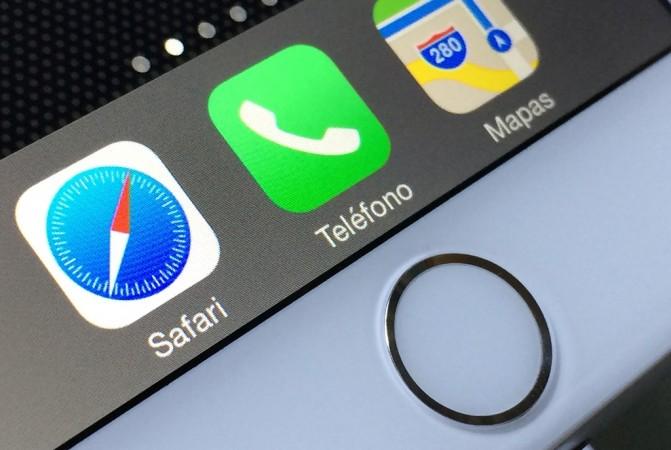
With the launch of the iPhone 8, Apple will definitely make sure that its new flagship smartphone is equipped with every possible feature to outshine Samsung's radically designed Galaxy S8. One of the highly speculated ways of how Apple will make this happen is by not incorporating a rear fingerprint sensor, something that apparently disappointed many Galaxy S8 users.
Although some recent iPhone 8 leaks did suggest that a fingerprint sensor could be placed on the device's back, a lot of ongoing rumours over the past few weeks have pointed towards an on-screen solution. What actually made them speculate on an embedded Touch ID is the lack of indication for a rear fingerprint sensor on leaked panels, and a growing consensus that Apple will bring in an OLED screen, occupying almost the entire front of the next-generation iPhone.
So, there is essentially no leaked details so far that make the case stronger for an on-screen fingerprint scanner for the iPhone 8. What if Apple is planning neither a display-mounted nor a rear Touch ID?
Yes, that's still a possibility, if a new patent, granted to Apple on Tuesday, is considered.
The patent, titled "Finger biometric sensor assembly including direct bonding interface and related methods," depicts a method of embedding a fingerprint sensor into a button while one of the accompanying drawings shows it as part of the physical power button.

The patent primarily deals with detailing the bonding interface between the finger biometric sensor and the outer layer.
A finger biometric sensor assembly may include a finger biometric sensor integrated circuit (IC) die having a finger sensing area and a cover layer aligned with the finger sensing area. The finger biometric sensor may also include a direct bonding interface between the finger biometric sensor IC die and the cover layer.
The direct bonding interface may be a hydrophilic direct bonding interface, for example. Alternatively, the direct bonding interface may be a hydrophobic direct bonding interface. The direct bonding interface may include silicon oxynitride. The direct bonding interface may include silicon oxide, for example.
The patent also describes a possibility of using thin piece of glass for the cover layer of the button. Although embedding the fingerprint sensor into a button on the device's top is just one of possible options, the patent apparently refers to it as a preferred alternative.
The present invention will now be described more fully hereinafter with reference to the accompanying drawings, in which preferred embodiments of the invention are shown. This invention may, however, be embodied in many different forms and should not be construed as limited to the embodiments set forth herein.
So, how will people use this button-mounted fingerprint sensor? No, you don't need to roll your fingertip across the sensor or touch it. It will require you to press down the button.
Do you think Apple will ever make such a design change to the iPhone? In case Apple fails to incorporate the fingerprint sensor into iPhone 8's display, do you think a rear Touch ID is the only way out? Let us know in the comments below.

















